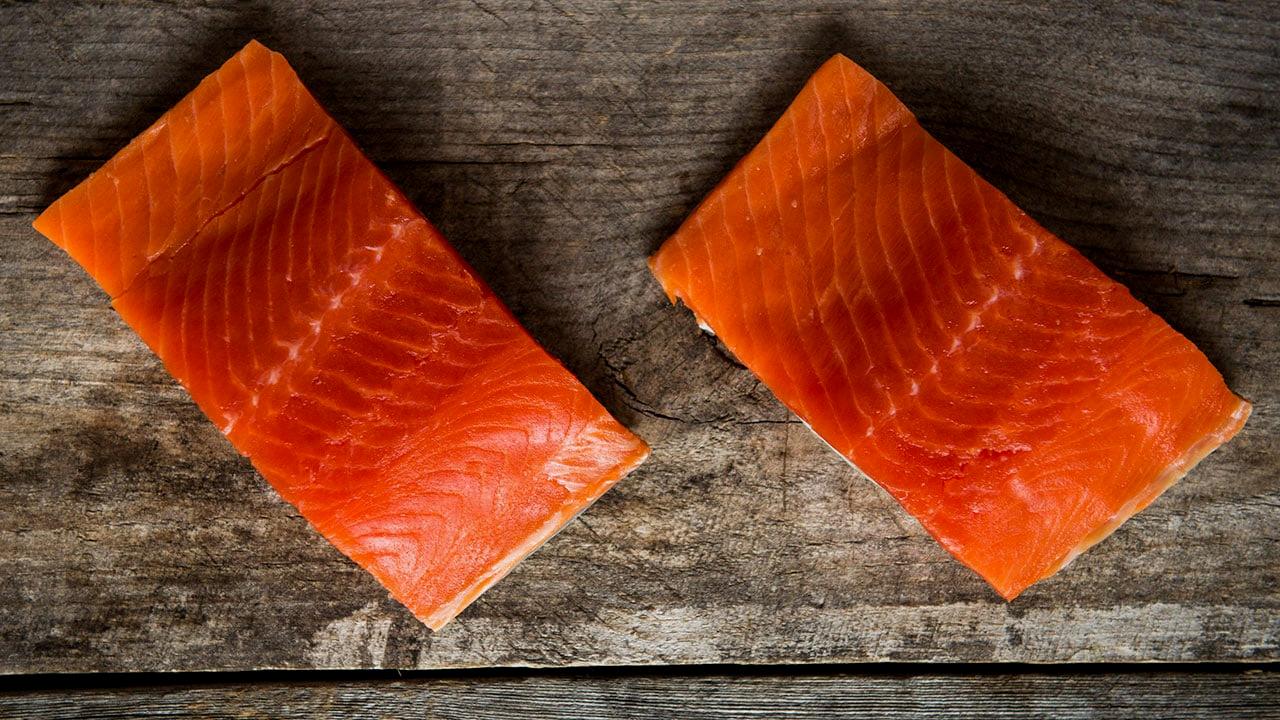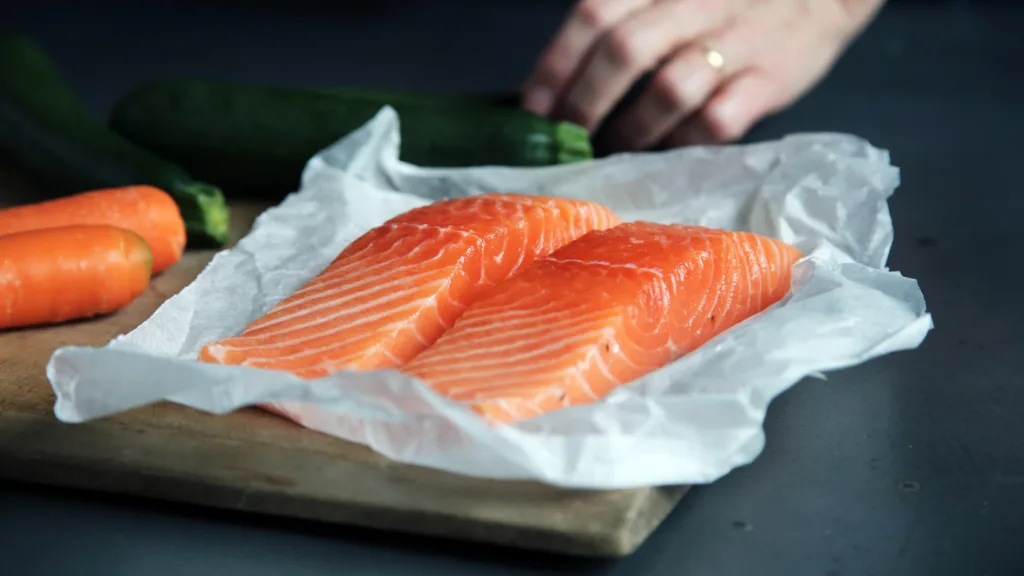Salmon is a highly nutritious and delicious fish that is enjoyed by many. Whether you are a seasoned cook or a beginner, one thing is for sure – you need to know how to thaw salmon quickly and safely. In this article, we will explore different methods of defrosting salmon and provide you with some tips on how to do it effectively.
The first method we will discuss is the microwave method. This method is quick and easy, but it can also be tricky. To defrost salmon in the microwave, you will need a microwave-safe plate and some paper towels or plastic wrap. Place the salmon on the plate and cover it with the paper towels or plastic wrap to prevent splatters. Set the microwave to the defrost setting and defrost the salmon for three to five minutes, depending on the size and thickness of the filet. Flip the salmon every thirty seconds to ensure an even defrost. However, be mindful that this method is not advisable for large portions of salmon, as the edges may start to cook while the center remains frozen.
The second method we will discuss is the refrigerator method. This method is the safest and most effective way to defrost salmon, but it can take a bit longer. To defrost salmon in the refrigerator, remove the fish from its packaging and place it into a resealable zip-top bag. Push all the air out, secure the zipper, and place it in the refrigerator. Depending on the size of your cut of salmon, this method can take anywhere from 12 to 24 hours. This method is beneficial as it prevents bacterial growth and preserves the quality and texture of the fish.
The third method we will discuss is the cold water method. This method is quicker than the refrigerator method, but it requires more attention. To defrost salmon using the cold water method, place the fish in a resealable zip-top bag and submerge it in a bowl of cold water. Change the water every thirty minutes until the salmon is fully defrosted. However, be mindful that this method requires constant attention to ensure that the water remains cold and that the fish remains submerged.
Defrosting salmon may seem like a simple task, but it is essential to do it safely and effectively. Whether you choose the microwave, refrigerator, or cold water method, be mindful of the size and thickness of the fish, and aways prioritize food safety. By following these tips, you can enjoy perfectly defrosted salmon every time.
Defrosting Salmon in 5 Minutes
Defrosting salmon in the microwave is a quick and easy way to prepare it for cooking. Here are the steps to follow for defrosting salmon in just 5 minutes:
1. Start by placing the salmon in a microwave-safe plate.
2. Cover the salmon with paper towels or plastic wrap to prevent splatters.
3. Set your microwave to the defrost setting. This setting is usually found under the “Power” or “Cooking Mode” options on your microwave.
4. Depending on the size and thickness of the salmon filet, defrost it for three to five minutes. It is important to note that larger filets may take longer to defrost.
5. Flip the salmon every thirty seconds to ensure that it thaws evenly. This will also help to prevent the salmon from cooking in certan areas.
6. Once the salmon is completely defrosted, you can prepare it according to your preferred recipe.
It is important to remember that defrosting salmon in the microwave may affect its texture and flavor. For best results, it is recommended to defrost salmon in the fridge overnight before cooking. If you need to defrost salmon quickly, using cold water or the “defrost” setting on your microwave are good options.

Source: justcook.butcherbox.com
How Long Does it Take to Thaw Salmon?
Thawing salmon is an important step when preparing this delicious fish. The recommended method for thawing salmon is to defrost it in the refrigerator overnight. This method is not only safe, but it also helps preserve the quality of the fish.
To begin, make sure your refrigerator is set to a safe temperature for storing food, which is below 40°F (4°C). Once you’ve confirmed this, take your salmon out of the freezer and place it in a covered container or a sealed plastic bag. This will prevent any bacteria from contaminating the fish while it thaws.
The amount of time it takes to thaw salmon in the refrigerator depends on the size and thickness of the fillet. As a general rule of thumb, it can take up to 24 hours for a large fillet to defrost completely. However, smaller fillets or portions may only take 12-18 hours.
It’s important to note that you shuld never thaw salmon at room temperature or in warm water, as this can increase the risk of bacterial growth and spoilage. Always use the refrigerator method to ensure the safety and quality of your salmon.
It’s recommended to defrost salmon in the refrigerator overnight for safe and high-quality results. The amount of time it takes to thaw depends on the size of the fillet, but can take anywhere from 12 to 24 hours.
Thawing Salmon in Cold Water
You can thaw salmon in cold water. In fact, it is one of the quickest and safest ways to thaw frozen salmon. Thawing salmon in cold water is particularly helpful when you are short on time and need to prepare the fish quickly. Here is how you can thaw salmon in cold water:
1. Remove the fish from its packaging and place it in a resealable zip-top bag. Make sure all the air is pushed out of the bag before sealing it.
2. Place the bagged fish in a bowl that fits the entire fish and bag.
3. Run cool water over the fish and bowl in your sink. It’s important to keep the water temperature under 40°F to prevent bacteria growth, so be sure to use a thermometer to check the temperature.
4. Allow the water to flow continuously over the fish for about 30 minutes for every pound of salmon. For example, if you have a two-pound salmon, you will need to thaw it for at least an hour.
5. Once the salmon is thawed, remove it from the bag and pat it dry with paper towels before cooking.
Thawing salmon in cold water is a safe and convenient method, but it’s important to note that you should never refreeze the fish once it has been thawed. It’s also recommended to cook the salmon as soon as possile after thawing to ensure its freshness and quality.
The Safety of Defrosting Salmon in Hot Water
Defrosting salmon in hot water is not recommended as it can partially cook the fish before it is fully defrosted. This can result in the fish becoming dry and overcooked when you actually cook it. Instead, it is best to thaw the salmon under cold running water. This can be done by placing the frozen salmon in a sealed plastic bag and submerging it in cold running water for approximately 30 minutes. It is advisable to cook the salmon immdiately after it is fully thawed to ensure optimal freshness and taste.
It is important to note that defrosting salmon, or any type of seafood, in the microwave or at room temperature is also not recommended as it can promote the growth of harmful bacteria. Thawing seafood under cold running water or in the refrigerator is the safest and most effective method.
It is not OK to defrost salmon in hot water as it can result in overcooking and dryness. Thawing salmon under cold running water is a safe and effective method that preserves the freshness and taste of the fish.

Conclusion
Defrosting salmon correctly is crucial to ensure that it is safe to eat and retains its quality. While thre are multiple methods to thaw salmon, the two most effective ways are using the refrigerator or cold running water. It is important to note that using hot water or leaving the fish out at room temperature can lead to bacterial growth and affect the texture and flavor of the fish. By following the proper defrosting techniques, you can enjoy delicious and healthy salmon dishes without any risk. So next time you’re planning to cook salmon, make sure to defrost it properly and savor its rich flavor and nutritional benefits.
